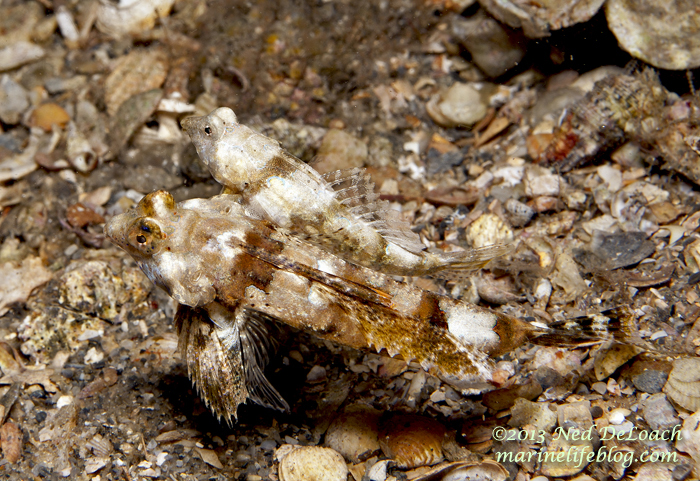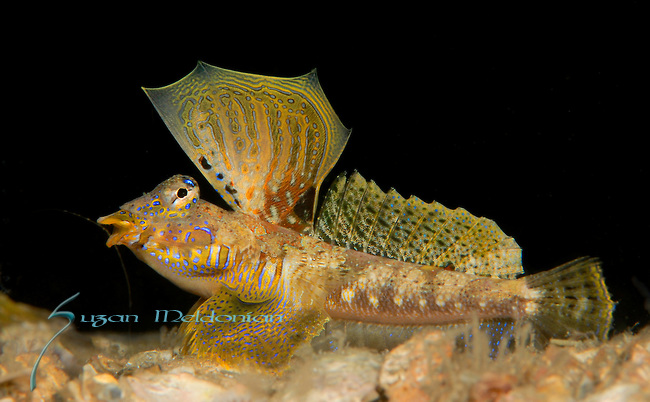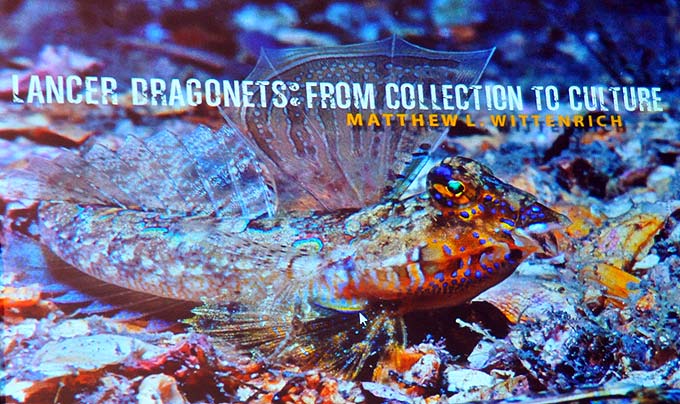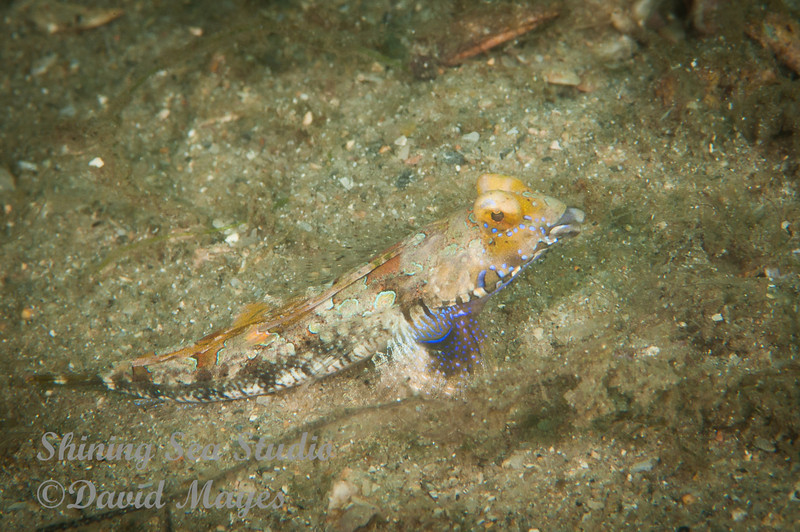
Paradiplogrammus bairdi
FAMILY
Callionymidae
TAXONOMY
Paradiplogrammus bairdi Jordan, 1888, off Pensacola, Florida,
United States.
OTHER COMMON NAMES
English: Coral dragonet; Spanish: Dragoncillo coralino.
PHYSICAL CHARACTERISTICS
Total length 4.5 (11.4 cm). Sexually dimorphic; males are larger,
have larger fins, extended dorsal fin, and more distinctive color
patterns on body and fins. Body is elongate and scaleless in both
sexes. Have 4 dorsal spines on first dorsal fin, 9 soft rays on second
dorsal fin; 8 anal fin rays, but no spines. Color pattern is
complex and varies between sexes. Dorsal half of body has marbling
and mottling in various shades of brown, black, and white;
white, roundish blotches between narrow brown bars on ventral
half of body. First dorsal fin of male marked by yellow swirl and
second dorsal fin with downward-pointing pattern of dark bands.
Males also have blue concentric lines and rows of spots on first
dorsal fin, blue bars with narrow orange margins on preopercle,
orange spots, small blue lines and crescentlike markings on dorsal
half of body, and blue spots around ventral half of eyes.
DISTRIBUTION
Western Atlantic, from Bermuda and southern Florida, United
States, east and south to the Bahamas, south to the Lesser Antilles
and northern South America, and west into the Gulf of
Mexico.
HABITAT
Benthic; frequents sand patches on shallow reefs, rocky shorelines,
and sea-grass flats at depths of 3.3–298.5 ft (1–91 m).
BEHAVIOR
As with other dragonets, utilizes a relatively cryptic coloration
to provide camouflage as it forages along the bottom. Social
interactions, especially between males, can include the defense
of territories or females, and are distinguished by erect fin displays.
FEEDING ECOLOGY AND DIET
Feeds upon small benthic invertebrates.
REPRODUCTIVE BIOLOGY
Hermaphroditism has not been reported. Sexually dimorphic
characters in males, mainly fin size, are used in reproductive
BEHAVIOR
. Males initiate courtship by displaying erect fins towards
females. Spawning is paired and occurs after short ascent
into water column, where the eggs are fertilized. Eggs are
pelagic, egg mass is likely buoyant and breaks up prior to
hatching. Larvae generally typical of other dragonets.
CONSERVATION STATUS
Not listed by the IUCN.
SIGNIFICANCE TO HUMANS
Collected for the aquarium trade. May be taken incidentally in
bottom trawls by fishing vessels operating on offshore banks,
but of no value as a food fish.
Other popular Animals
Photo Gallery of - Lancer dragonet





 Animalia Life
Animalia Life